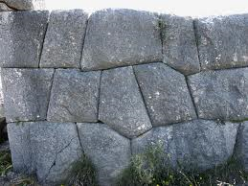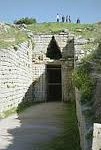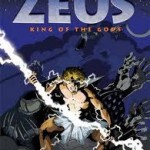 While Greek and Roman themes are heavily referenced throughout this book, the most whimsical mythic icon appears to the left. It is a section of the Cyclopean walls, still extant in Greece and Italy. While not the circular face with two cut -out arcs of Asterios, the center stone in the middle column, middle row does mimic in style and ‘humanity’ the protagonists’ image and demeanor.
While Greek and Roman themes are heavily referenced throughout this book, the most whimsical mythic icon appears to the left. It is a section of the Cyclopean walls, still extant in Greece and Italy. While not the circular face with two cut -out arcs of Asterios, the center stone in the middle column, middle row does mimic in style and ‘humanity’ the protagonists’ image and demeanor.
Almost top-heavy with dualities, Mazzucchelli’s Asterios Polyp presents both Greek and Roman mythology (Polyp’s Greek father and Italian mother), the yin and yang of relationships (Asterios and Hana curled in bed together), and the contemporary paper verses scissors bilarity (cerebral architect and actual designer/builder).
Here’s the dichotomy of the plot: In 1927, E.M. Forester wrote in Aspects of the Novel that the central suspense depends on the difference between flat and round characters and the believability that round characters must embody to produce tension, and hence, a book worth reading. We have the story of an architect (with one effective eye) who never built any structures compared to the Cyclopes race and members of a Tracian tribe of skillful architects who built the Cyclopean walls of “unhewn polygons, sometimes 20 or 30 feet in breadth” (Dictionary of Greek and Roman Biography and Mythology).
the central suspense depends on the difference between flat and round characters and the believability that round characters must embody to produce tension, and hence, a book worth reading. We have the story of an architect (with one effective eye) who never built any structures compared to the Cyclopes race and members of a Tracian tribe of skillful architects who built the Cyclopean walls of “unhewn polygons, sometimes 20 or 30 feet in breadth” (Dictionary of Greek and Roman Biography and Mythology).
Unnerving me further, after the Cyclopes were hurled into Tartarus, a prison of the underworld, they became followers of Zeus and made lightning bolts for him.
Here’s the punch line: Forester also believes the protagonist often has to be sacrificed in order to end the  book on the proper note of released tension.
book on the proper note of released tension.
The nuances and depths of this novel are many and the complicated layers provide a rich quest and odyssey.
